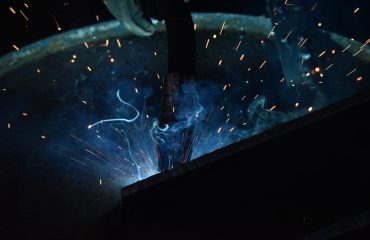body {
font-family: sans-serif;
line-height: 1.6;
}
h1, h2, h3 {
color: #333;
}
In a world increasingly conscious of hygiene and infection control, the development of antibacterial surfaces is paramount. Antibacterial steel, a revolutionary material, is emerging as a powerful tool in the fight against harmful bacteria. This post delves into the science behind this innovative material, exploring its applications, benefits, limitations, and future prospects.
The Science Behind Antibacterial Steel
Antibacterial steel isn’t simply stainless steel with added cleaning agents. The antimicrobial properties are often achieved through different methods, primarily focusing on inhibiting bacterial growth. One common approach involves incorporating antimicrobial agents directly into the steel during the manufacturing process. These agents, often silver ions or copper alloys, are released slowly over time, creating a hostile environment for bacteria. The silver ions, for instance, disrupt bacterial cell membranes, effectively killing or inhibiting their growth. Another method involves modifying the surface texture of the steel at a microscopic level, creating a surface that is less hospitable to bacteria. This can involve creating a rougher texture that prevents bacteria from forming biofilms, or a smoother, less porous surface that minimizes bacterial adhesion.
Applications of Antibacterial Steel in Healthcare
The healthcare industry is a prime beneficiary of antibacterial steel. Hospitals and clinics are constantly battling against healthcare-associated infections (HAIs), which pose a significant threat to patient safety. Using antibacterial steel in surfaces like countertops, sinks, handrails, and medical equipment can significantly reduce the bacterial load and the risk of cross-contamination. This is particularly crucial in operating rooms, intensive care units, and other high-risk areas. The reduced bacterial burden translates to fewer infections, shorter hospital stays, and improved patient outcomes. The self-cleaning properties of this steel also reduce the need for harsh chemical disinfectants, potentially improving the overall environment for both patients and staff.
Antibacterial Steel in Food Production and Preparation
The food industry is another area where maintaining hygiene is paramount. Contamination can lead to foodborne illnesses and significant economic losses. Antibacterial steel surfaces in food processing plants, kitchens, and restaurants offer a powerful line of defense against bacterial contamination. Work surfaces, equipment, and storage containers made from antibacterial steel can minimize the risk of bacterial growth, improving food safety and reducing the risk of outbreaks. This is especially important in the handling of raw meats and other high-risk foods. The long-lasting antimicrobial effect reduces the need for frequent and intensive cleaning, enhancing efficiency and productivity.
Limitations and Considerations of Antibacterial Steel
While antibacterial steel offers significant advantages, it’s crucial to acknowledge its limitations. The effectiveness of the antimicrobial agents can vary depending on the type of bacteria, the concentration of the agent, and environmental factors. Some bacteria may develop resistance over time, requiring careful monitoring and potentially the development of new antimicrobial agents. Furthermore, the initial cost of antibacterial steel can be higher than that of standard stainless steel. However, the long-term benefits, such as reduced cleaning costs and prevention of costly outbreaks, can often outweigh the initial investment. Proper maintenance and cleaning practices are still essential to maintain the effectiveness of the antibacterial properties.
The Future of Antibacterial Steel
Research and development in antibacterial steel are ongoing, focusing on improving the effectiveness, durability, and cost-effectiveness of the material. Scientists are exploring new antimicrobial agents and surface modification techniques to broaden the spectrum of bacteria targeted and enhance the long-term antimicrobial activity. The integration of nanotechnology and other advanced materials is also promising, leading to the development of even more effective and versatile antibacterial steel surfaces. The future likely holds the development of self-cleaning and self-sterilizing steel, further revolutionizing hygiene and infection control across various sectors. Furthermore, a growing focus on sustainability is driving research into environmentally friendly antimicrobial agents and manufacturing processes for antibacterial steel.
In conclusion, antibacterial steel represents a significant advancement in materials science, offering a powerful tool in the fight against harmful bacteria. Its applications are wide-ranging, promising improved hygiene and safety across numerous industries. While limitations exist, ongoing research and development are paving the way for even more effective and sustainable antibacterial steel solutions in the future.
SEO Tags:
- Antibacterial Steel
- Antimicrobial Steel
- Stainless Steel Hygiene
- Infection Control Materials
- Food Safety Technology




